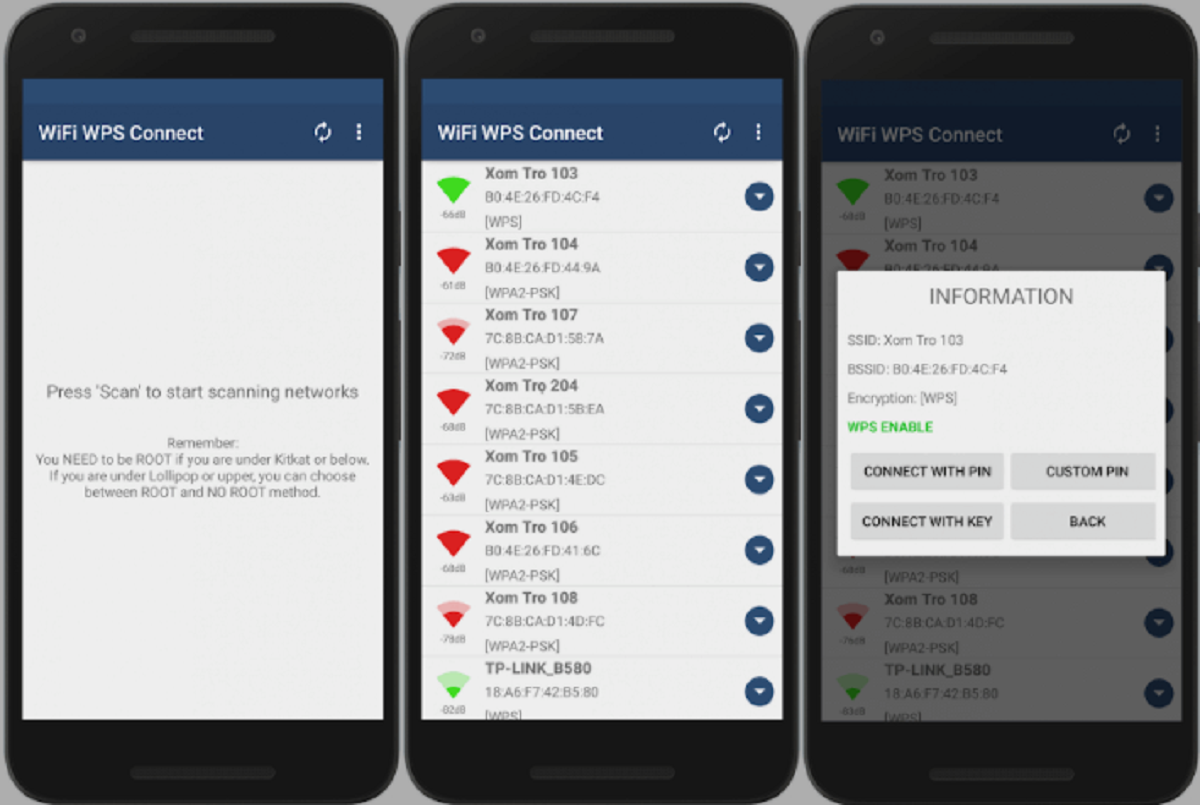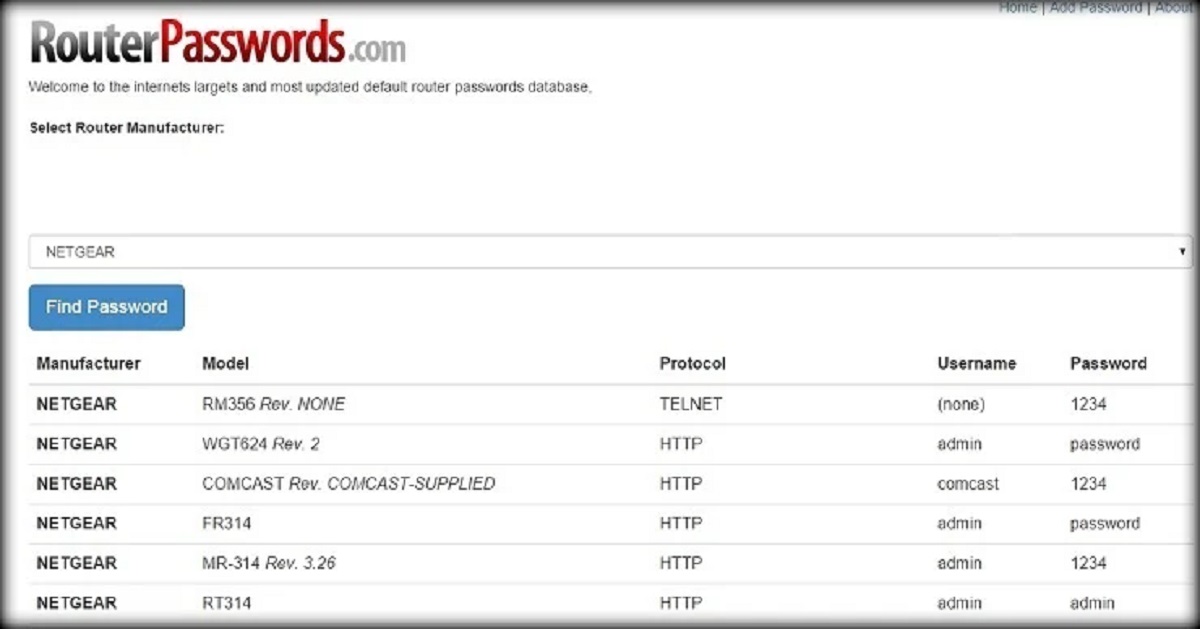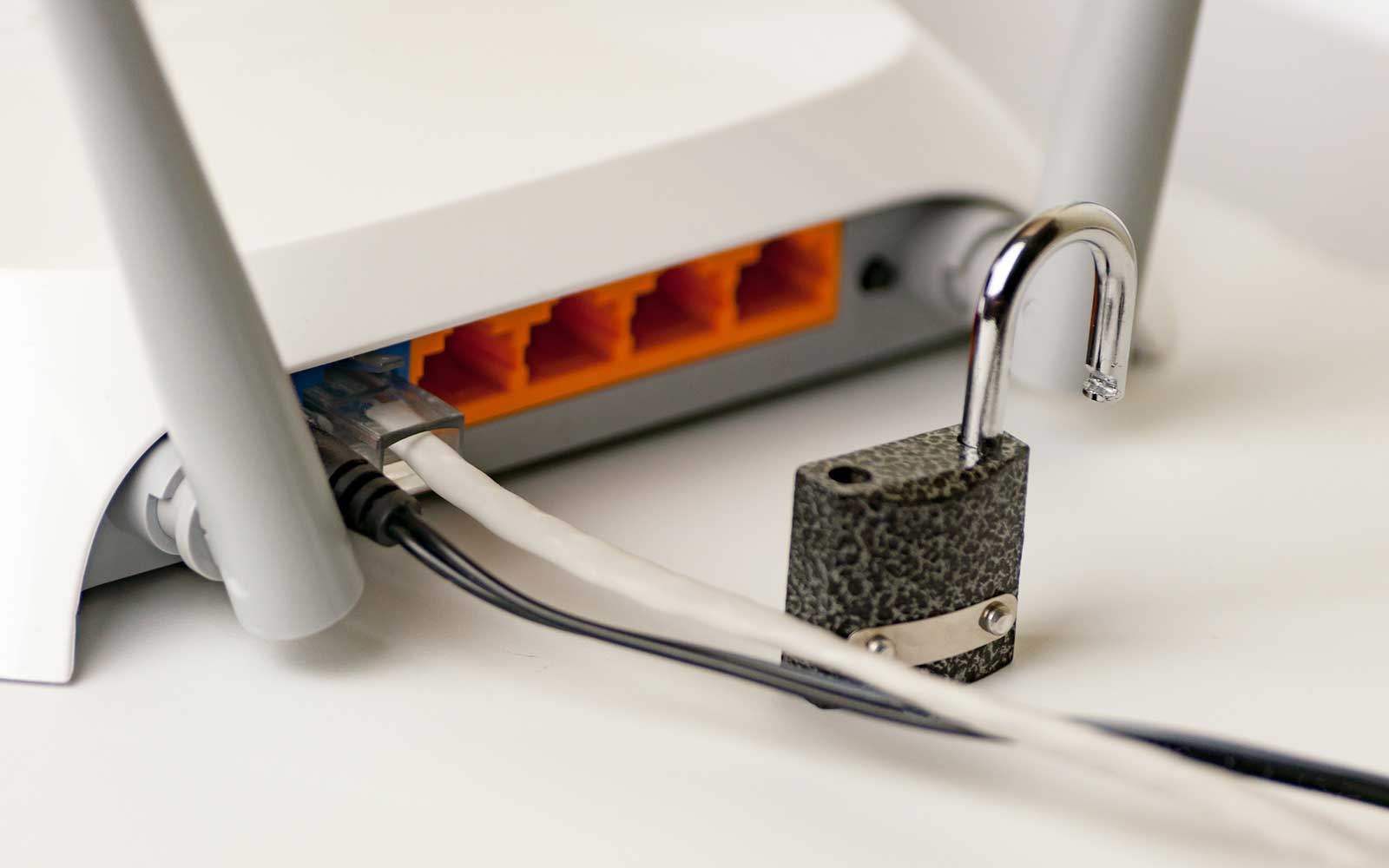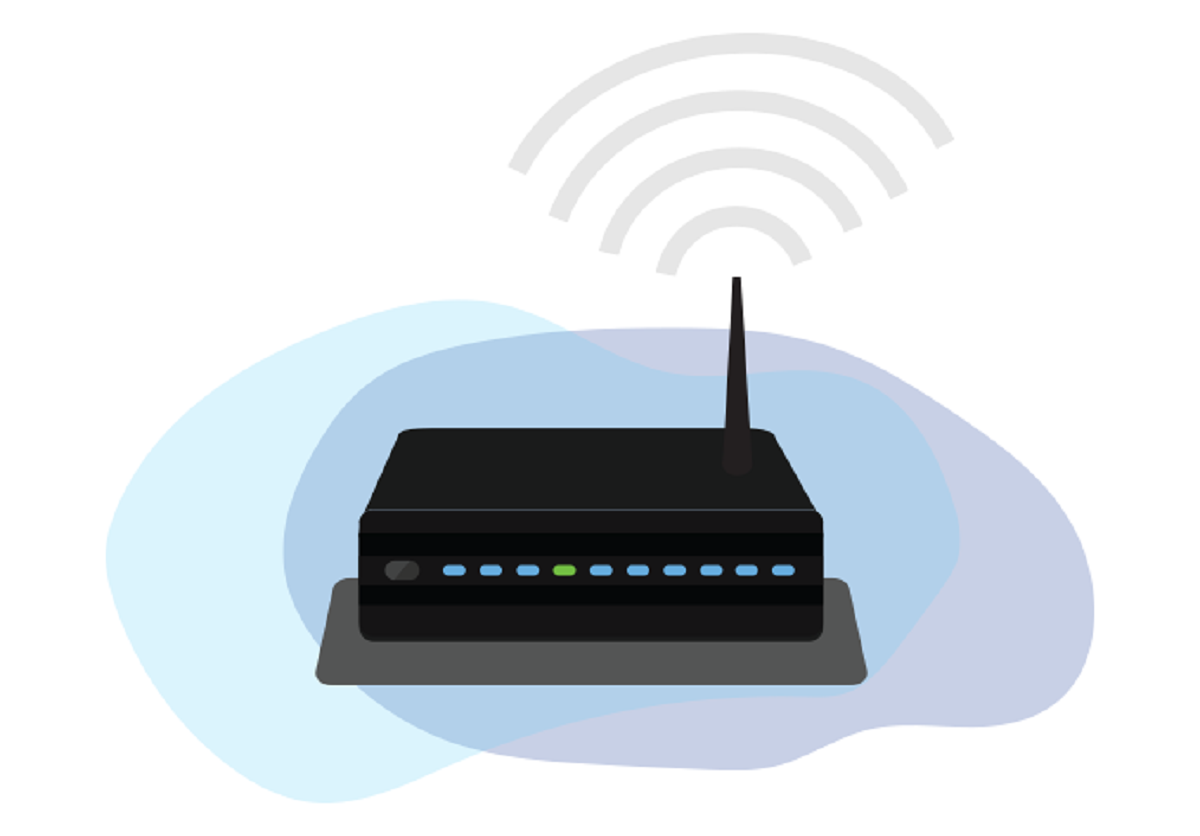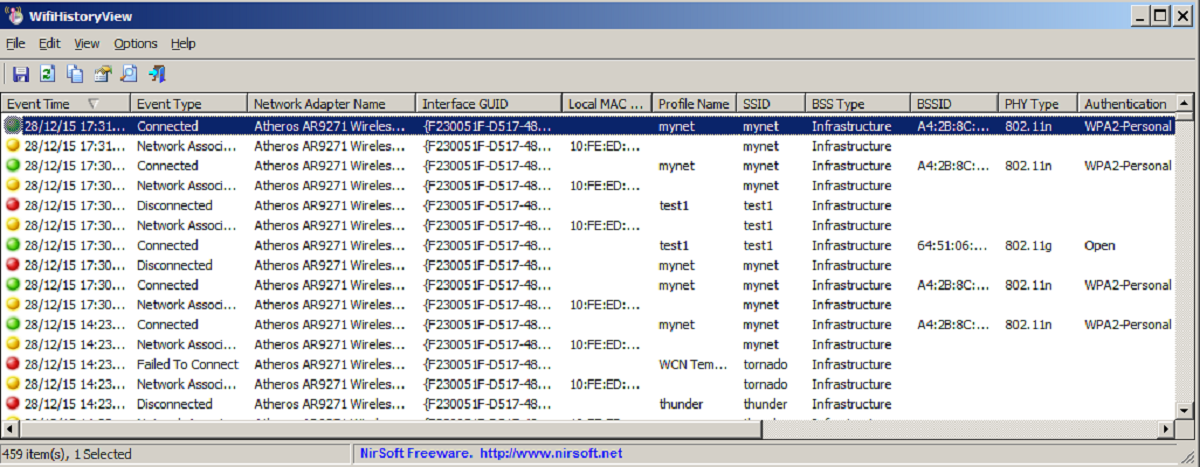Introduction
Welcome to the intriguing world of Wi-Fi hacking! In today’s digitally connected world, Wi-Fi networks play a crucial role in our daily lives. Whether it’s for work, communication, or entertainment, a reliable and secure Wi-Fi connection is a necessity for most people. However, have you ever wondered how to hack into nearby Wi-Fi networks? Well, you’re in the right place!
Before we dive into the exciting world of Wi-Fi hacking, it is important to emphasize that hacking into someone else’s Wi-Fi network is illegal and unethical. This article is purely for educational purposes, to help you understand the vulnerabilities that exist in Wi-Fi networks and how they can be exploited. It is essential to always obtain proper authorization and follow the laws and regulations of your country.
Understanding the fundamental concepts behind Wi-Fi networks is essential for any aspiring Wi-Fi hacker. Wi-Fi, short for Wireless Fidelity, is a technology that allows devices to connect to the internet without the need for physical cables. These networks are created using wireless routers, which transmit data signals that can be received by devices equipped with Wi-Fi capability.
While Wi-Fi brings convenience and flexibility, it also introduces vulnerability, as unsecured networks can be easily accessed by malicious individuals. That’s where Wi-Fi hacking comes into play. By exploiting weaknesses in the security protocols, hackers can gain unauthorized access to Wi-Fi networks, potentially compromising sensitive information and privacy.
In this article, we will explore various methods and techniques used in Wi-Fi hacking. We will learn about different types of Wi-Fi security, such as WEP, WPA, and WPA2, and understand their vulnerabilities. Additionally, we will delve into the process of gathering information about target networks, exploiting weak passwords, performing brute force attacks, leveraging weaknesses in the Wi-Fi Protected Setup (WPS) feature, and executing man-in-the-middle attacks. We will also discuss the role of social engineering in Wi-Fi hacking.
Finally, as responsible users of technology, we will highlight the importance of securing our own Wi-Fi networks. By implementing strong passwords, regular firmware updates, and utilizing other security measures, we can safeguard our networks from potential attackers and ensure our own digital safety.
So, let’s embark on this educational journey and gain a deeper understanding of Wi-Fi hacking, its techniques, and how we can protect ourselves in this digital landscape.
Understanding Wi-Fi Networks
In today’s interconnected world, Wi-Fi networks have become an integral part of our lives. But how do these networks actually work? Let’s take a closer look.
Wi-Fi, short for Wireless Fidelity, is a wireless communication technology that allows devices such as smartphones, laptops, and tablets to connect to the internet or other devices without the need for physical cables. Wi-Fi networks are created using wireless routers or access points, which transmit data signals that can be received by devices equipped with Wi-Fi capability.
Wi-Fi operates on radio waves, using specific frequencies within the electromagnetic spectrum. These frequencies, typically in the 2.4 GHz or 5 GHz range, allow for data transmission between devices and the router.
Wi-Fi networks are identified by a unique name called the Service Set Identifier (SSID). When you search for available networks on your device, you will see a list of SSIDs from nearby routers. It’s important to note that SSIDs can be hidden, meaning they won’t appear in the list of available networks, but can still be connected to if you know the SSID and the network’s password.
When you connect to a Wi-Fi network, your device sends a request to the router through a process called authentication. This involves verifying the password or other credentials to ensure that the user is authorized to access the network. Once authenticated, your device is assigned an IP address, allowing it to communicate with other devices on the network and access the internet.
Wi-Fi networks can operate in different modes, such as infrastructure mode and ad-hoc mode. In infrastructure mode, devices connect to a central wireless access point, which acts as a bridge between the Wi-Fi network and the internet. This is the most common mode used in homes, offices, and public places. On the other hand, ad-hoc mode allows devices to connect directly to one another without the need for a central access point, creating a temporary network for file sharing or gaming.
Understanding the basics of how Wi-Fi networks function is essential for Wi-Fi hackers. By identifying vulnerabilities in these networks, hackers can exploit security flaws and gain unauthorized access. This is where different types of security protocols come into play, such as WEP (Wired Equivalent Privacy), WPA (Wi-Fi Protected Access), and WPA2 (Wi-Fi Protected Access II), each with varying levels of security measures.
In the next sections, we will explore these security protocols and dive into the techniques used to hack into Wi-Fi networks. Remember, knowledge is power, and by understanding how Wi-Fi networks work, we can better protect ourselves from potential attacks.
Types of Wi-Fi Security
Wi-Fi networks are vulnerable to various security threats, and in order to protect them, different security protocols have been developed. Let’s take a closer look at the most common types of Wi-Fi security.
1. Wired Equivalent Privacy (WEP): WEP was one of the first security protocols introduced for Wi-Fi networks. It uses a shared key authentication method and encrypts data using the RC4 algorithm. However, WEP has numerous security vulnerabilities and is considered highly insecure. It is easily hacked using tools readily available on the internet.
2. Wi-Fi Protected Access (WPA): WPA was introduced as an improvement over WEP, addressing some of its security flaws. It introduced the Temporal Key Integrity Protocol (TKIP), which provides better encryption and key management as compared to WEP. However, WPA is still vulnerable to various attacks.
3. Wi-Fi Protected Access II (WPA2): WPA2 is currently the most commonly used Wi-Fi security protocol. It provides a higher level of security by implementing the Advanced Encryption Standard (AES) algorithm. WPA2 is considered secure when configured properly, offering stronger protection against attacks compared to WEP and WPA.
4. Wi-Fi Protected Access III (WPA3): WPA3 is the latest iteration of Wi-Fi security protocols, providing increased security features over WPA2. It enhances encryption, reduces the likelihood of brute force attacks, and introduces better protection for open networks. While WPA3 offers improved security, it is not yet widely adopted, and most Wi-Fi devices still primarily support WPA2.
When connecting to a Wi-Fi network, it is recommended to use WPA2 or WPA3 if available, as they provide better protection against unauthorized access and data interception. It’s important to note that the security of a Wi-Fi network not only depends on the type of security protocol used but also on other factors such as the strength of the password and the configuration of the network.
Additionally, it’s worth mentioning that there are open Wi-Fi networks that do not require any authentication or password to connect. While these networks offer convenience, they also pose security risks as data transmitted over them can be easily intercepted by attackers. It is advisable to avoid transmitting sensitive information over open Wi-Fi networks and use a virtual private network (VPN) for added security.
Understanding the different types of Wi-Fi security protocols is essential for both network administrators and individuals using Wi-Fi networks. By selecting and implementing the appropriate security measures, we can mitigate the risk of unauthorized access and protect our sensitive data.
Gathering Information
Before attempting to hack into a Wi-Fi network, it is crucial to gather relevant information about the target network. This information will help in understanding the network’s vulnerabilities and devise appropriate hacking techniques. Here are some key steps involved in gathering information.
1. Network Identification: The first step is to identify the target network. This can be done by scanning for available Wi-Fi networks in the surrounding area. Tools like Wireshark, NetStumbler, or Kismet can help in identifying nearby networks and gathering information about their SSID (Service Set Identifier), MAC address, and signal strength.
2. Network Mapping: Once the target network is identified, the next step is to map its infrastructure. Tools like Nmap, Zenmap, or Fing can be used to scan the network and identify active hosts, open ports, and services running on those hosts. This information is crucial for understanding the network architecture and potential entry points for attack.
3. Active Devices: It is important to identify the active devices connected to the target network. This can be done by analyzing the MAC addresses of the devices. MAC address filtering may be implemented by some networks as an additional security measure, and knowing the MAC addresses of connected devices can help in bypassing this restriction.
4. Wireless Security Protocol: Determining the security protocol used by the target network is essential for planning the hacking technique. This information can be obtained by analyzing the network’s authentication process and encryption type. Tools like Aircrack-ng or Wireshark can aid in capturing and analyzing packets to determine the security protocol.
5. Signal Strength: Knowing the signal strength of the target network is valuable information, as it helps in understanding the network’s range and potential for unauthorized access from a distance. Tools like inSSIDer or NetSpot can be used to measure signal strength and identify areas with weak coverage.
6. Social Engineering: While not strictly technical, social engineering plays a crucial role in gathering information about the target network. It involves manipulating individuals associated with the network, such as employees or administrators, to gather sensitive information like passwords or network configurations. Techniques like phishing emails or impersonating technical support personnel can be employed for social engineering attacks.
Gathering information about the target network is an essential phase in the Wi-Fi hacking process. It helps in identifying vulnerabilities and potential entry points for exploitation. However, it is important to remember that unauthorized access to Wi-Fi networks is illegal and unethical. The knowledge gained from gathering information should be used responsibly and ethically, for educational and defensive purposes only.
Exploiting Weak Passwords
One of the most common and effective methods of hacking into Wi-Fi networks is exploiting weak passwords. Many network administrators and individuals often make the mistake of using easily guessable or common passwords, providing an opportunity for hackers to gain unauthorized access. Here are some techniques used to exploit weak passwords.
1. Dictionary Attacks: In a dictionary attack, the attacker uses a pre-existing list of commonly used passwords, known as a dictionary, to systematically guess the password. Password cracking tools can automate this process by attempting numerous combinations of words, common phrases, or character substitutions. This approach is successful when users choose passwords that can be found in such dictionaries.
2. Brute Force Attacks: Brute force attacks involve systematically trying every possible combination of characters until the correct password is discovered. This method is time-consuming but can be effective against weak passwords. Password cracking tools are used to automate the process and can attempt thousands of passwords per second.
3. Rainbow Table Attacks: Rainbow table attacks use precomputed tables that contain a vast number of possible passwords and their corresponding hash values. These tables can speed up the password cracking process by matching the encrypted password with the entries in the table. This technique is particularly effective against hashing methods like MD5 or SHA-1, which do not incorporate a salt value.
4. Password Guessing: Sometimes, hackers exploit weak passwords through educated guessing. They analyze personal information about the target, such as names, birthdays, or other publicly available details, and attempt to guess the password based on those clues. This method is more successful when the target does not follow password best practices and uses easily guessable information.
5. Default Passwords: Another common weakness is the failure to change default passwords on wireless routers. Manufacturers often set default passwords that are widely known and can be found online. Hackers exploit this oversight by attempting default login credentials to gain access to the router and, subsequently, the Wi-Fi network.
It is important to note that hacking into someone’s Wi-Fi network without proper authorization is illegal and unethical. However, understanding these techniques can help individuals and network administrators improve the security of their own networks.
To protect against password exploitation, it is crucial to follow password best practices. Choose strong, unique passwords that consist of a combination of uppercase and lowercase letters, numbers, and special characters. Avoid using easily guessable information and regularly update passwords to mitigate the risk of being hacked.
Network administrators should also enforce password complexity rules, implement account lockouts after multiple failed login attempts, and monitor network logs for any suspicious activity. Educating users about the importance of strong passwords and the risks associated with weak passwords is also crucial in maintaining network security.
Remember, the first line of defense against password attacks is a strong and unique password. Implementing password best practices is an essential step in protecting your Wi-Fi network from unauthorized access.
Brute Force Attacks
Brute force attacks are an aggressive and straightforward method of hacking into Wi-Fi networks. This technique involves systematically trying every possible combination of characters until the correct password is discovered. While time-consuming, brute force attacks can be effective against networks with weak passwords. Let’s take a closer look at how these attacks work.
1. Password Length and Complexity: Brute force attacks rely on the assumption that the password is within a certain length and complexity range. By attempting all possible combinations of characters, including lowercase letters, uppercase letters, numbers, and special characters, hackers exhaustively search for the correct password. The longer and more complex the password, the more time it takes to crack.
2. Automated Tools: Manual brute force attacks are impractical due to the sheer number of possible combinations. Instead, hackers rely on specialized software and tools to automate the process. These tools use algorithms and dictionaries to generate and try various password combinations rapidly, significantly speeding up the attack.
3. Time and Computing Power: The time it takes to crack a password using brute force depends on several factors, such as the length and complexity of the password, the processing power of the attacker’s device, and any countermeasures implemented by the network, such as account lockouts or password complexity rules. Longer and more complex passwords require exponentially more computing power and time to crack.
4. Distributed Brute Force Attacks: To further speed up the process, hackers may employ distributed brute force attacks. In this technique, multiple devices or a botnet are used to share the computational workload, making the attack faster and more efficient by dividing the work among several machines simultaneously.
5. Countermeasures: To protect against brute force attacks, network administrators can implement the following countermeasures:
– Account Lockouts: Enforce a temporary lockout or delay after a certain number of failed login attempts, making it difficult for attackers to continue their brute force efforts.
– Strong Password Policies: Require users to create strong and complex passwords, including a combination of uppercase and lowercase letters, numbers, and special characters.
– CAPTCHA or Human Verification: Implement CAPTCHAs or other human verification methods to prevent automated brute force attacks.
– Rate Limiting: Throttle the number of login attempts per second to slow down the brute force process.
– Two-Factor Authentication (2FA): Adding an extra layer of security by requiring users to provide a second form of authentication, such as a one-time password or biometric verification.
– Monitoring and Alerting: Regularly monitor network logs for suspicious login attempts or unusual activity, and set up alerts to notify administrators of potential brute force attacks.
It is crucial to understand that conducting brute force attacks on Wi-Fi networks without proper authorization is illegal and unethical. The knowledge gained about these attacks should be used responsibly to assess network security and strengthen defenses against potential threats.
By implementing strong and complex passwords, enforcing account lockouts, and leveraging additional security measures, network administrators can significantly reduce the risk of successful brute force attacks and maintain the security of their Wi-Fi networks.
WPS Vulnerabilities
Wi-Fi Protected Setup (WPS) is a feature designed to simplify the process of connecting devices to Wi-Fi networks. While convenient, WPS has inherent vulnerabilities that can be exploited by hackers to gain unauthorized access to Wi-Fi networks. Let’s explore some of the vulnerabilities associated with WPS.
1. Weak PIN: WPS relies on an eight-digit PIN to authenticate devices on the network. However, several implementation flaws allow for brute force attacks, making it easier for hackers to guess the PIN. Commonly used default PIN values or commonly occurring patterns make it even simpler for attackers to exploit this weakness.
2. Limited PIN Attempts: WPS typically limits the number of attempts that can be made to guess the PIN, typically around 10 or fewer. However, hackers can bypass this restriction by resetting the number of attempts through various techniques, allowing them to continue brute force attacks until the correct PIN is discovered.
3. Offline PIN Attacks: In some cases, attackers can intercept the communication between a device and the Wi-Fi router while attempting to connect using WPS. This intercepted information can then be used offline to launch offline PIN attacks, where the attacker can take all the time needed to find the correct PIN without worrying about being detected by any lockout mechanisms.
4. Pixie Dust Attacks: Pixie Dust attacks exploit a vulnerability in the WPS protocol by targeting the public key exchange process. By intercepting specific packets exchanged during this process, hackers can extract the necessary information to calculate the WPS PIN offline, allowing them to gain access to the network without needing to perform any brute force attempts.
5. Disabled Lockout Mechanisms: Some Wi-Fi routers disable the lockout mechanism provided by WPS, allowing unlimited PIN attempts. This oversight creates a significant vulnerability, as attackers can freely attempt multiple PIN combinations until the correct one is found without any repercussions.
To protect against WPS vulnerabilities, it is recommended to disable WPS on Wi-Fi routers. This can typically be done through the router’s administration interface. While this may slightly inconvenience users when connecting new devices, it significantly reduces the risk of unauthorized access through WPS.
Additionally, network administrators should regularly update their router’s firmware to ensure any security patches addressing WPS vulnerabilities are applied. It is crucial to stay informed about any new vulnerabilities discovered and promptly address them to uphold the integrity and security of the Wi-Fi network.
Awareness and understanding of the vulnerabilities associated with WPS are essential for both network administrators and individuals using Wi-Fi networks. By taking appropriate precautions and implementing best practices, we can mitigate the risk of unauthorized access through WPS and ensure the security of our Wi-Fi networks.
Man-in-the-Middle Attacks
A man-in-the-middle (MitM) attack is a malicious technique where an attacker intercepts and alters communication between two parties without their knowledge. In the context of Wi-Fi networks, MitM attacks can be used to gain unauthorized access, capture sensitive information, or manipulate data traffic. Let’s explore how these attacks work and the potential risks they pose.
1. ARP Spoofing: Address Resolution Protocol (ARP) spoofing is a common method used in MitM attacks. By spoofing the ARP table on the network, the attacker redirects network traffic through their own device, allowing them to intercept and modify the communication between the victim and the intended destination. This enables them to eavesdrop on sensitive information or inject malicious content into the data packets.
2. DNS Spoofing: Domain Name System (DNS) spoofing involves manipulating the DNS responses to redirect users to a fake website controlled by the attacker. By replacing legitimate DNS responses with malicious ones, the attacker can deceive victims into providing sensitive information such as login credentials or credit card details on the fraudulent site.
3. SSL/TLS Stripping: Secure Sockets Layer (SSL) and Transport Layer Security (TLS) encryption protocols are designed to provide secure communication over networks. In an SSL/TLS stripping attack, the attacker intercepts traffic and forces the communication to occur over an unencrypted connection. This allows them to capture sensitive information, such as passwords or credit card details, that would otherwise be protected through encryption.
4. Rogue Access Points: In a rogue access point attack, the attacker sets up a fake Wi-Fi network that appears legitimate to users. By mimicking the network name (SSID) of a trusted network, the attacker lures victims into connecting to the rogue access point. Once connected, the attacker can intercept and manipulate network traffic, potentially capturing sensitive information or injecting malicious code.
5. Session Hijacking: Session hijacking involves stealing or impersonating an active session between a user and a network service. By intercepting and obtaining session cookies or session IDs, the attacker gains unauthorized access to the victim’s account and can perform actions on their behalf. This type of attack can occur over Wi-Fi when the connection is not properly secured, allowing the attacker to capture and manipulate session-related information.
To protect against MitM attacks, it is crucial to take the following precautions:
- Use encrypted protocols: Make sure that communications are encrypted using secure protocols like HTTPS or VPNs. This makes it more difficult for attackers to intercept and decrypt sensitive information.
- Verify SSL certificates: Always verify the SSL certificates of websites to ensure that you are connecting to legitimate and trusted servers.
- Ensure Wi-Fi network security: Avoid connecting to unsecured or unknown Wi-Fi networks. If possible, use networks that require authentication and use encryption, such as WPA2 or WPA3.
- Regularly update software: Keep all devices, including routers and applications, up to date with the latest security patches. This helps protect against known vulnerabilities that attackers may exploit.
- Use strong, unique passwords: Strong passwords help protect against unauthorized access to accounts and reduce the risk of falling victim to session hijacking attacks.
By understanding the techniques used in MitM attacks and implementing adequate security measures, individuals and network administrators can better protect their Wi-Fi networks and sensitive information from these malicious threats.
Using Social Engineering
Social engineering is a psychological manipulation technique that hackers use to exploit human behavior and gain unauthorized access to Wi-Fi networks. By tricking individuals into revealing sensitive information or performing certain actions, attackers leverage the power of human trust and interaction. Let’s explore some common social engineering techniques used in Wi-Fi hacking.
1. Phishing: Phishing attacks involve sending deceptive emails or messages, often impersonating trusted entities, to trick individuals into revealing their login credentials or other sensitive information. These messages may contain urgent requests, enticing offers, or alarming warnings to induce recipients to click on malicious links or provide their information.
2. Pretexting: Pretexting is a technique where the attacker creates a fictional scenario or pretext to gain the target’s trust. They might pose as a trusted individual, such as an IT support staff or a fellow employee, and request sensitive information or unauthorized access to the Wi-Fi network.
3. Tailgating: Tailgating, also known as piggybacking, involves an attacker physically following someone authorized to use a secure area or Wi-Fi network. By relying on someone else’s access privileges, the attacker gains entry without authentication. This technique often exploits people’s natural tendency to be helpful or avoid confrontation.
4. Impersonation: In impersonation attacks, hackers pretend to be someone they are not to deceive individuals into granting them access to the Wi-Fi network. This can involve posing as a technician, a trusted colleague, or a representative from a legitimate organization to manipulate users into sharing passwords or granting physical access to the network.
5. Baiting: Baiting involves enticing individuals with appealing offers, such as free Wi-Fi access or the promise of valuable rewards, to lure them into connecting to a malicious network or downloading malware-infected files. This technique leverages people’s curiosity or desire for instant gratification, leading them to compromise their devices or reveal sensitive information.
To protect against social engineering attacks:
- Be cautious of unsolicited communications: Be wary of unexpected emails, messages, or phone calls, especially if they request sensitive information or seem too good to be true. Verify the legitimacy of the communication through trusted channels before taking any action.
- Always verify before sharing information: When approached by someone seeking access to the Wi-Fi network or sensitive information, independently verify their identity and authorization. Contact the relevant department or organization directly using verified contact details to confirm their legitimacy.
- Use security awareness training: Educate yourself and employees about the tactics used in social engineering attacks. Empower individuals to recognize and report suspicious interactions or requests for sensitive information.
- Implement multi-factor authentication (MFA): Enable MFA to add an extra layer of security to Wi-Fi networks, requiring more than just a password for access. This minimizes the risk of an attacker gaining unauthorized access even if they obtain login credentials through social engineering techniques.
- Regularly update software: Keep all devices, including routers and applications, up to date with the latest security patches. This helps protect against known vulnerabilities that attackers may exploit through social engineering.
By remaining vigilant, practicing skepticism, and promoting security awareness, individuals and organizations can defend against social engineering attacks and keep their Wi-Fi networks and sensitive information safe.
Securing Your Own Wi-Fi Network
Securing your own Wi-Fi network is essential to prevent unauthorized access, protect sensitive information, and ensure the integrity of your connection. By implementing effective security measures, you can safeguard your network and reduce the risk of being hacked. Let’s explore some important steps to secure your Wi-Fi network.
1. Change Default Router Credentials: When setting up a new Wi-Fi router, one of the first things you should do is change the default username and password. Attackers often leverage default login credentials to gain unauthorized access to routers, so choosing strong, unique credentials is crucial to protect against this common vulnerability.
2. Enable Encryption: Encrypting your Wi-Fi network is vital to protect data transmitted between devices. Use the most secure encryption protocol available on your router, such as WPA2 or WPA3. Avoid using the outdated and insecure WEP (Wired Equivalent Privacy) protocol, as it can be easily compromised.
3. Use a Strong Wi-Fi Password: Choose a strong and complex password for your Wi-Fi network. A strong password should be long, include a mix of uppercase and lowercase letters, numbers, and special characters. Avoid using easily guessable information such as birthdays, names, or dictionary words. Regularly update your Wi-Fi password to maintain security.
4. Enable Network Name Broadcasting: Ensure that your Wi-Fi network’s SSID (Service Set Identifier) is not hidden. Hiding the SSID may seem like a security measure, but it can make your network more susceptible to targeted attacks by hackers. Letting the SSID broadcast allows your devices to easily discover and connect to the network.
5. Implement MAC Address Filtering: MAC address filtering allows you to control which devices can connect to your Wi-Fi network. By specifying the MAC addresses of trusted devices, you can limit access to only those devices. However, keep in mind that MAC addresses can be easily spoofed, so this measure should not be relied upon as the sole means of securing your network.
6. Set Up a Guest Network: If you frequently have guests or visitors who require internet access, consider setting up a separate guest network. This isolates your main network from potential threats and keeps your personal devices and data separate. Configure the guest network with its own password to limit access.
7. Regularly Update Firmware: Keep your Wi-Fi router’s firmware up to date with the latest patches and security updates. Router manufacturers often release firmware updates to address vulnerabilities and enhance security. Check for updates periodically or set your router to automatically install updates.
8. Disable Unused Services: Review the services and features enabled on your Wi-Fi router and disable any unnecessary ones. Unused services may introduce additional security risks, as they can provide potential entry points for attackers. Disable features like remote administration or UPnP (Universal Plug and Play) if you don’t need them.
9. Use a Firewall: Enable the built-in firewall on your router to add an extra layer of protection. A firewall filters incoming and outgoing network traffic, blocking potentially malicious connections and protecting your devices from unauthorized access.
10. Educate Network Users: Educate all users of your Wi-Fi network about security best practices. Instruct them to use strong passwords for their devices and accounts, refrain from accessing sensitive data on public networks, and be cautious about clicking on suspicious links or downloading unknown files.
By following these steps and implementing robust security measures, you can significantly enhance the security of your Wi-Fi network. Remember to stay proactive, regularly review and update your security settings, and stay informed about emerging threats to ensure the ongoing protection of your network.
Conclusion
Securing Wi-Fi networks is of utmost importance in today’s interconnected world. We have explored various aspects of Wi-Fi hacking, including understanding Wi-Fi networks, types of Wi-Fi security, and different hacking techniques such as exploiting weak passwords, brute force attacks, WPS vulnerabilities, man-in-the-middle attacks, and social engineering.
It is crucial to acknowledge that the information shared in this article is for educational purposes only. Unauthorized access to Wi-Fi networks is illegal and unethical. The techniques discussed should be used responsibly and with appropriate authorization to assess and strengthen network security.
To secure your own Wi-Fi network, we emphasized the importance of changing default router credentials, enabling encryption with strong passwords, and regularly updating firmware. Additional measures include enabling network name broadcasting, implementing MAC address filtering, setting up a guest network, and educating network users about security best practices.
By taking proactive steps to secure your Wi-Fi network, you can protect sensitive information, prevent unauthorized access, and reduce the risk of falling victim to hacking attempts. It is crucial to stay informed about emerging vulnerabilities and security best practices to ensure that your network remains secure over time.
Remember, the security of Wi-Fi networks is a collective effort. Network administrators, individuals, and device manufacturers must work together to stay proactive and prioritize network security. By implementing strong security measures and continuously enhancing our knowledge, we can create a safer digital environment for all.







